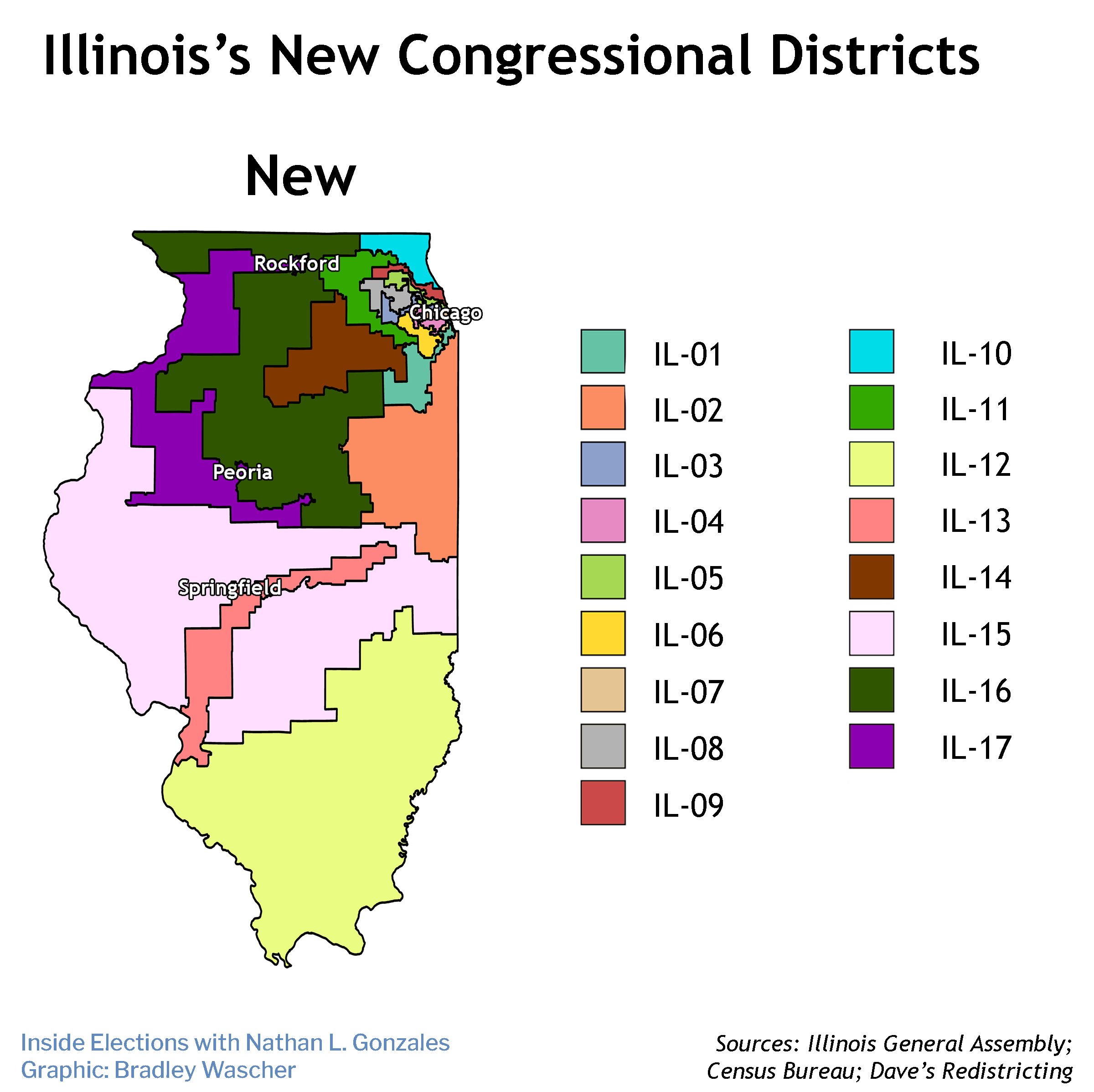Although the new Illinois congressional map will solidify Democrats’ advantage for years to come, neither party left the redistricting process unscathed. From eliminated districts to double-bunked incumbents, the revised lines introduce new intrigue — and uncertainty — to Prairie State politics.
Illinois has lost at least one seat in every redistricting cycle since 1980, and the same held true this time. Beginning with the 2022 election, the size of the state’s congressional delegation will drop from 18 members to 17.
Democrats, in control of the redistricting process, took full advantage where they could. Vulnerable seats in suburban outskirts were shored up, a new district was designed for Chicago’s Hispanic population, and two GOP-held districts were essentially dissolved.
But losing a seat meant making compromises. In order to draw a map this aggressive, many reliably Democratic districts had to shed their margins by 5 or 10 points, to help make up the difference in more competitive seats next door. When paired with the creation and dissolution of entire seats , it makes sense how both parties will have to grapple with member-vs.-member primaries on June 28.
Currently, the Illinois congressional delegation is composed of 13 Democrats and five Republicans. Under the new lines, Democrats could realistically extend their lead to 14D-3R. At the same time, an additional seat or two could be in play for Republicans during an especially favorable national environment.

1st District
The 1st, which still covers much of Chicago’s South Side, has been slightly reconfigured to reach farther south into Kankakee County. Notably, Democratic Rep. Bobby Rush is retiring after 15 terms. A sizable field of Democrats has emerged to replace him, including state Sen. Jacqueline Collins ...

